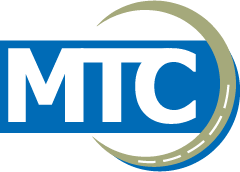Researchers
J. Erik Loehr
Kristen Sanford Berhardt
About the research
The objective of this project has been to develop a decision support framework, based on asset management principles, to facilitate effective decision making for selection of appropriate methods to stabilize failed earth slopes. Project activities included development of a simple asset management framework suitable for managing geotechnical assets, development of several analysis models to evaluate alternative slope maintenance and repair strategies, and evaluation of the potential for use of personal digital assistants (PDAs) for implementing geotechnical asset management systems.
A simple framework for managing geotechnical assets was developed based on ?mapping? of a generic asset management framework proposed by the Federal Highway Administration. A number of issues that must be addressed prior to complete implementation of a geotechnical asset management system was also identified. The most significant of these issues are lack of established procedures and techniques for collecting the required data and lack of suitable analysis tools required to evaluate alternative management scenarios. Because ongoing efforts to address the data collection and maintenance are underway, efforts for this project were focused on development of suitable analysis techniques. Two basic forms of analysis models were developed, both of which use decision trees to predict outcomes of alternative stabilization measures. The first form is referred to as the Instant in Time (IIT) form of model to reflect the fact that the model considers only a single application of a repair. In its current form, the IIT model does not model the potential costs of alternative stabilization measures over a consistent ?life-cycle.? The second form of model is referred to as the Specific Time Horizon (STH) form of model because it provides capabilities to model the potential need for repeated application of alternative repair techniques within a specified time period. In doing so, this form of model overcomes the most severe limitations of the IIT form of model while still retaining the significant advantages of the general decision tree approach. Several preliminary tools, referred to as ?break-even? diagrams, were developed using the models to illustrate one potential application of the techniques by field personnel.
Efforts undertaken to implement the developed models using PDAs were unsuccessful due to current lack of portability of PC-based tools to PDAs. However, the ability to port the PC-based models to PDAs is expected to be possible in the near future.
Funding Sources:
U.S. Department of Transportation
